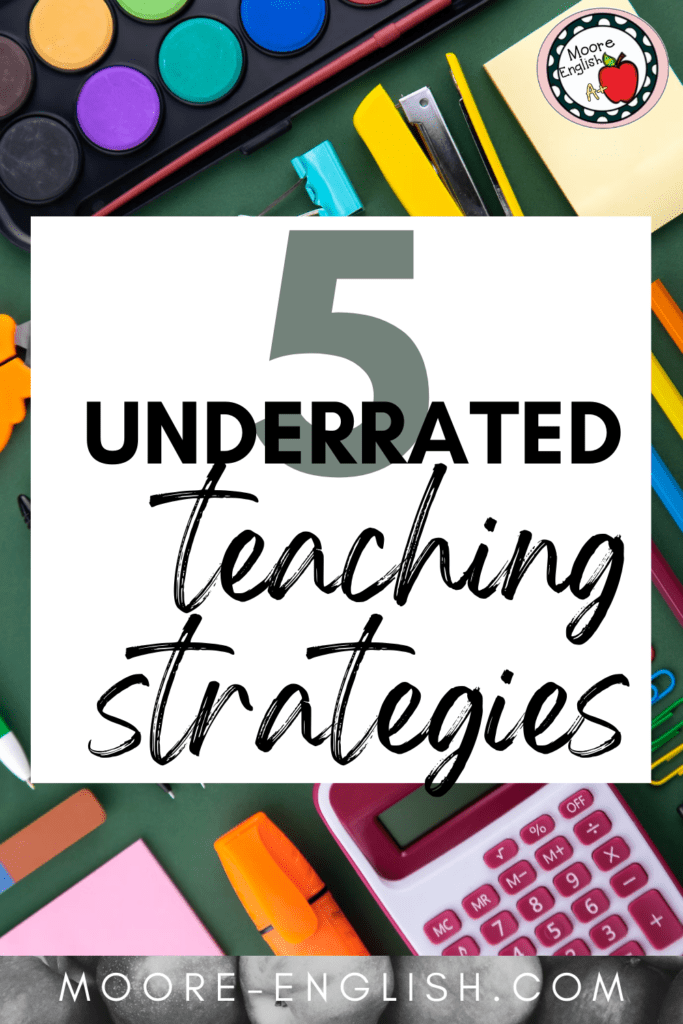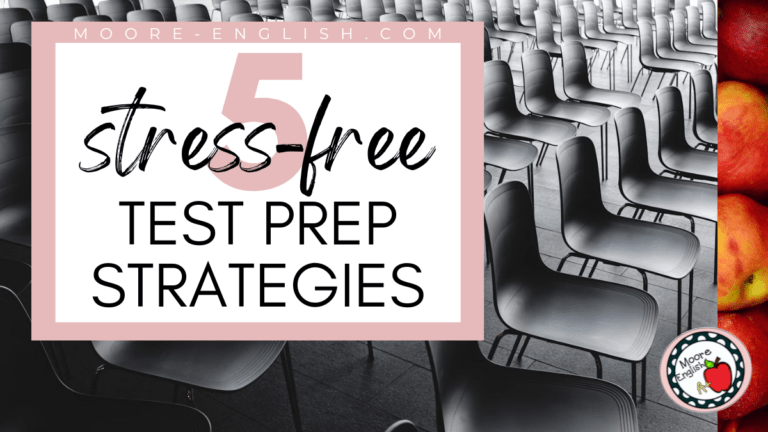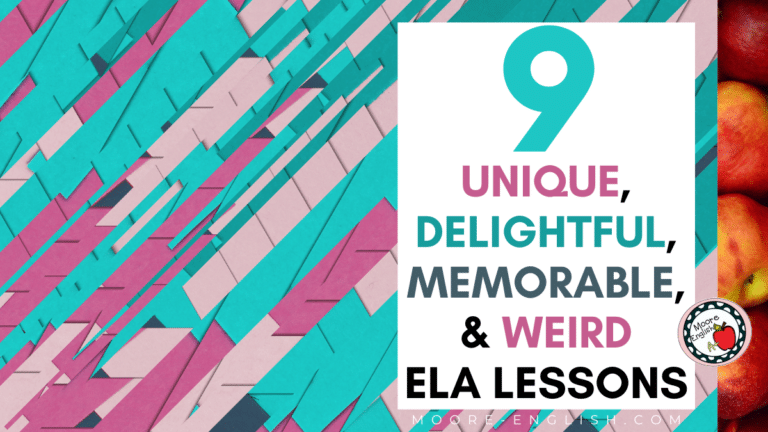As teachers, we all have our ride-or-die instructional strategies. However, some of the best strategies often get pushed aside in favor of bigger, better, brighter. Today, I want to focus on some underrated instructional strategies. These are effective, efficient, no-fuss, no-frills, and they work in every content area.
This post this post may contain affiliate links. Please read the Terms of Use.
Underrated Instructional Strategies for Visualization
Overall, visualization itself is an underrated instructional strategy. Visualization (or non-linguistic representation) is also one of Marzano’s high-yield strategies, so it’s an effective best practice. In particular, these two underrated instructional strategies are my favorites for visualizing:
First, anchor charts are not just for elementary classrooms. An anchor chart is an enduring visual cue for students. Teachers can make anchor charts even more powerful by building them with students. Incorporating graphic organizers can also take anchor charts to the next level. Check out my 6 Tips for Using Anchor Charts.
Second, mind maps are such an underrated instructional strategy. Mind maps allow students to visualize connections between and among ideas, concepts, characters, etc. One thing I love about mind maps is that they can be as informal or as formal as you’d like. In particular, when students are struggling with a concept, we will often turn to a mind map. Teachers can deploy mind maps off the cuff as they pivot or respond to student needs. Check out these 5 Digital Tools for Creating Mind Maps.
Listening Guides are Underrated
In education, there are few hills on which I’m willing to die, but this is one. If you’re showing a video (no matter how short), there should be a listening guide. Even if the listening guide is a quick sticky note exit ticket, there should be some method for students to showcase their learning.
Oftentimes, teachers shy away from listening guides because they are slow to build. Sometimes you do want a very specific listening guide, and that will take time to build. However, not all videos require that level of specificity. Instead, you can try these questions, which will work with any content.
- What is the overall message of the video?
- What stood out to you from the video? What did not?
- How effective is the video in communicating its message?
- What question do you wish you could ask the speaker or director?
- If you had to change one thing in the video, what would you change? Why?
To make the responses easier to assess, teachers can easily put them in a Google Form.
Listening guides are an accountability tool, but they are also a scaffold. Plus, in language arts, we also have listening standards to address. This is one of the underrated instructional strategies that has multiple benefits.
Underrated Instructional Strategies with Writing
As an English teacher, I appreciate the importance of writing across all contents. As a bonus, when students write, they build additional neural connections that help them make sense of new material. Writing about content is a ready-made scaffolding strategy. So often, teachers hear “writing” and jump to long essays. However, writing does not have to be formal and labored to be effective.
First, in Powerful Teaching: Unleash the Science of Learning by Pooja K. Agarwal and Patrice M. Bain, the authors discuss retrieval strategies. In general, retrieval strategies are underrated. Cult of Pedagogy has a complete post about how to incorporate retrieval practice. In particular, teachers can easily marry writing with retrieval strategies. After reading Agarwal and Bain’s book, I started incorporating braindumps more frequently. Students “dump” their knowledge about a specific topic on a piece of scratch paper. Then, we follow up with a quick pair-share. This practice helps students practice retrieving knowledge, which creates an essential foundation for continued growth. Of the underrated instructional strategies in this post, this is the one I use the most!
Second, journaling is such an underrated instructional strategy. Depending on the prompt and the lesson, journaling can be a type of retrieval practice. I love journals because they lend themselves to a variety of text connections. Students can connect texts to their experiences, to prior knowledge, or to other texts and events. Check out 6 Reasons Students Should Journal in ELA.












